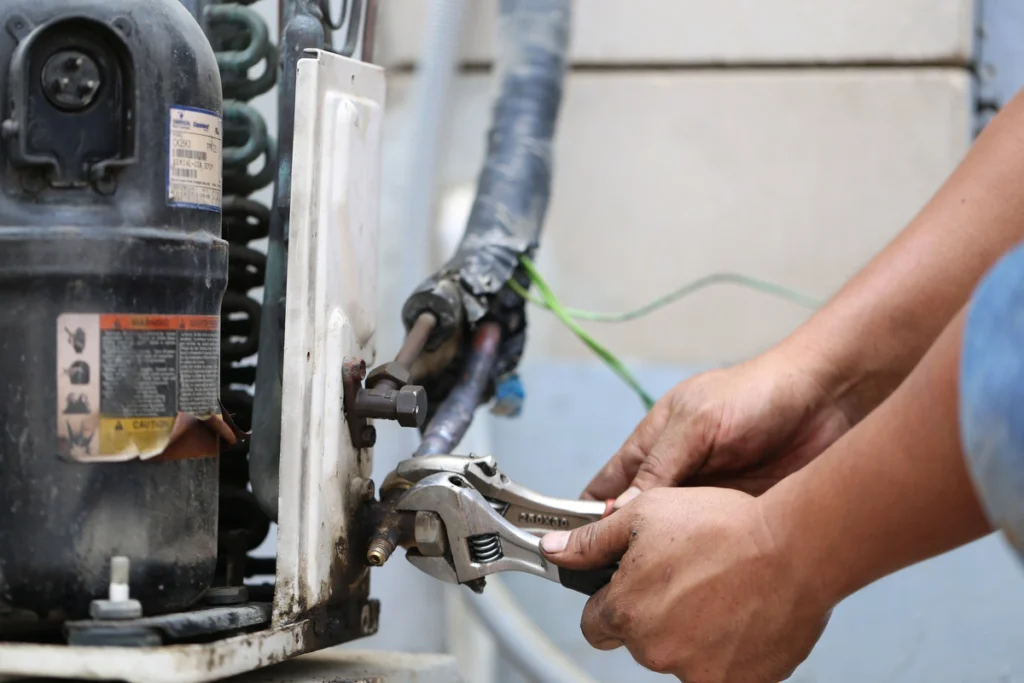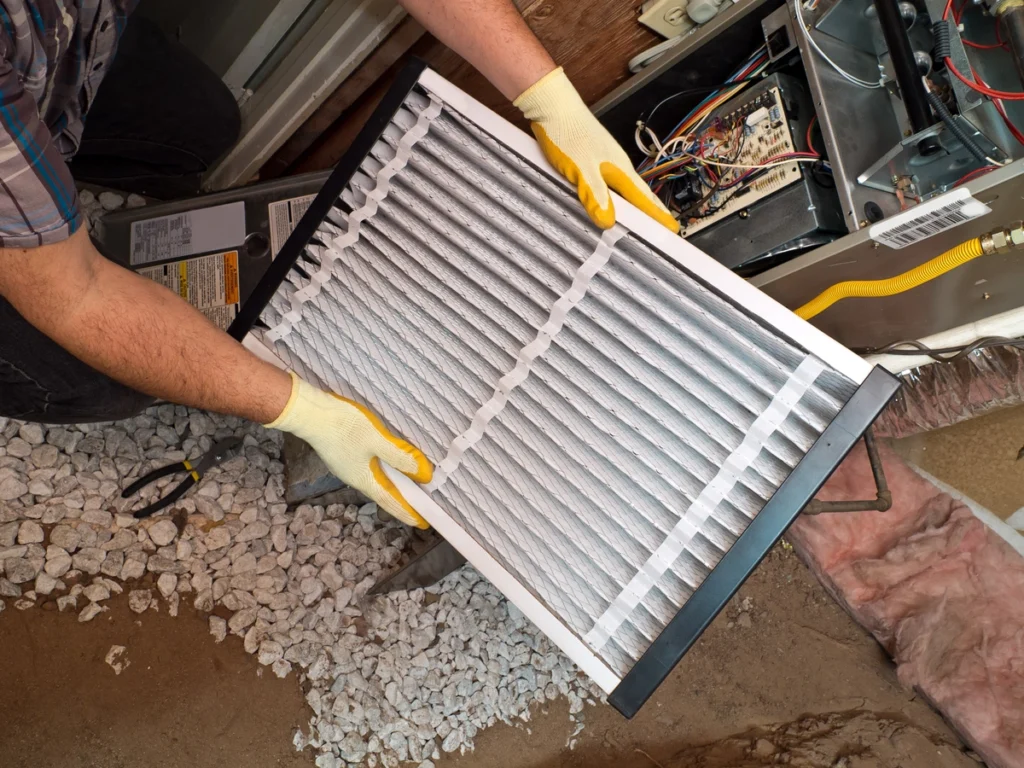When your furnace stops working unexpectedly, it can lead to a cold and uncomfortable situation at home, especially during the winter months. Knowing the basics of furnace operation and some simple troubleshooting can help you manage the situation until professional help arrives. This guide will provide you with essential steps for handling an emergency furnace repair, including:
- How to tell if your furnace has gone out
- The basics of a home furnace
- What to do in an emergency furnace situation
- How to keep your house warm
- How Palmetto Air Conditioning can help
How to Tell if Your Furnace Has Gone Out
If your furnace might be out, several signs can alert you to this issue. Detecting a non-functional furnace early can help prevent a complete heating breakdown. Here are signs to look for:
- No Heat: The most obvious is a lack of heat being produced, meaning your house remains cold despite the furnace running. If your furnace isn’t producing heat, it’s a clear sign something is wrong.
- Strange Noises: Unusual noises such as banging, squealing, whining, whistling, or groaning sounds from the furnace can indicate mechanical problems.
- Frequent Cycling: You might also notice that the furnace starts and stops more frequently than usual, a process known as short cycling, which often points to a malfunctioning thermostat or a clogged filter.
- Increased Heating Bills: Unexpectedly high bills can be a symptom of an inefficiently functioning furnace.
- Burning Smell: If you detect a persistent burning smell, this is a serious sign that requires immediate professional attention.
- Carbon Monoxide Alarms: The presence of carbon monoxide alarms due to sneaky carbon monoxide leaks sounding is a serious sign that requires immediate professional attention.
Basics of a Home Furnace

Understanding the main components of your furnace can help you identify and possibly fix the issue:
- Thermostat: Controls the temperature setting in your home.
- Furnace Ignitor or Pilot Light: Ignites the fuel (gas or oil) that heats the air.
- Heat Exchanger: Heats up the air that will be circulated throughout the home.
- Blower Motor: Pushes the heated air through the ductwork.
- Air Filters: Trap dust and debris from circulating through your home.
What to Do in an Emergency Furnace Situation
If your furnace goes out, follow these steps to troubleshoot:
- Check the Thermostat: Ensure it’s set to “heat” and the temperature is set higher than the current room temperature.
- Inspect the Circuit Breaker: Make sure the furnace’s circuit breaker is on and hasn’t tripped.
- Examine the Furnace Switch: Verify that the furnace switch (usually located on or near the furnace) is turned on.
- Change the Filter: A clogged filter can impede airflow and shut down the system.
- Reset the Furnace: Look for a reset button on your furnace and press it if necessary.
How to Keep Your House Warm
If your furnace is out and you await repairs, keep your home warm by:
- Sealing Drafts: Use weather stripping or draft stoppers on doors and windows.
- Using Space Heaters: Electric space heaters can warm up small areas. Always use them away from flammable materials.
- Keeping Doors Closed: Heat smaller areas effectively by closing off unused rooms.
- Utilizing Curtains: Open curtains during the day to let sunlight in and close them at night to keep the heat.
How Palmetto Air Conditioning Can Help
For repairs beyond basic troubleshooting, Palmetto Air Conditioning offers:
- Expert Technicians: Professional and licensed technicians who can handle all types of furnace problems.
- Same-Day Service: Available around the clock to help you when you need it most.
- Maintenance Services: Regular check-ups and maintenance to keep your furnace running efficiently.
- 100% Financing Options: We work with you to keep your home comfortable.
4 Frequently Asked Questions About DIY Emergency Furnace Repairs

Explore commonly asked questions about DIY emergency furnace repairs to enhance your understanding and troubleshooting skills for common furnace issues.
🗓️ 1. How often should I replace my furnace filter?
Check your filter every month and replace it if it’s dirty. During high-use months, it might need more frequent changes.
👃 2. What should I do if I smell gas near the furnace?
If you smell gas, do not attempt to fix the furnace yourself. Evacuate the area and call emergency services and a professional immediately.
🚩 3. Can a furnace leak carbon monoxide?
Yes, furnaces can leak carbon monoxide if the heat exchanger is cracked. Install carbon monoxide detectors and ensure they function properly.
🛠️ 4. Is it safe to perform electrical repairs on my furnace?
Electrical repairs can be dangerous. If the issue involves electrical components, it’s safer to call a professional.
We’re Ready To Help
While some furnace problems can be addressed with simple DIY steps, others require professional attention. Knowing the basics and when to call in experts like Palmetto Air Conditioning can keep your home warm and safe throughout the winter months. We’re ready to help in an emergency, so call us today to talk with our expert technicians.
